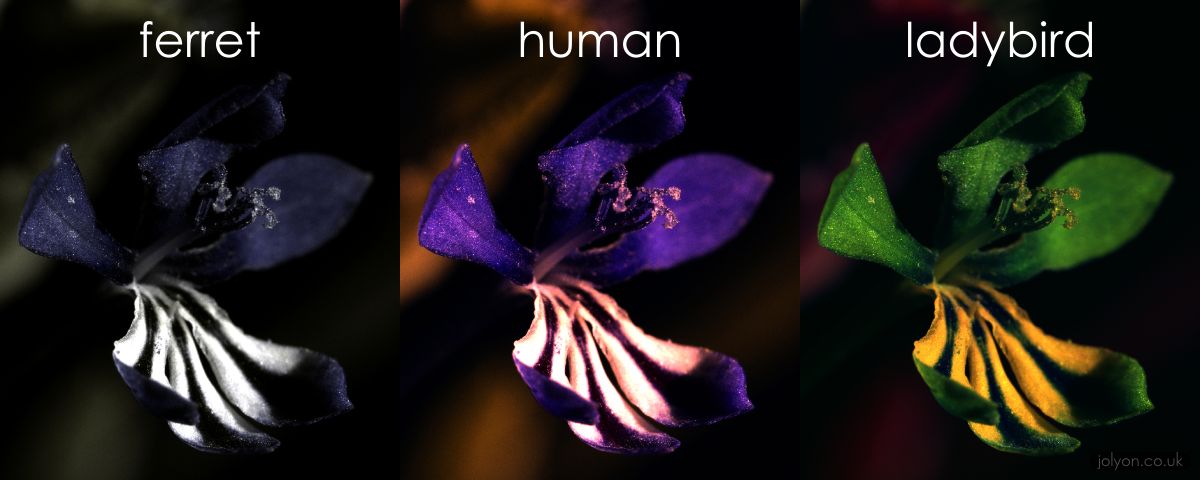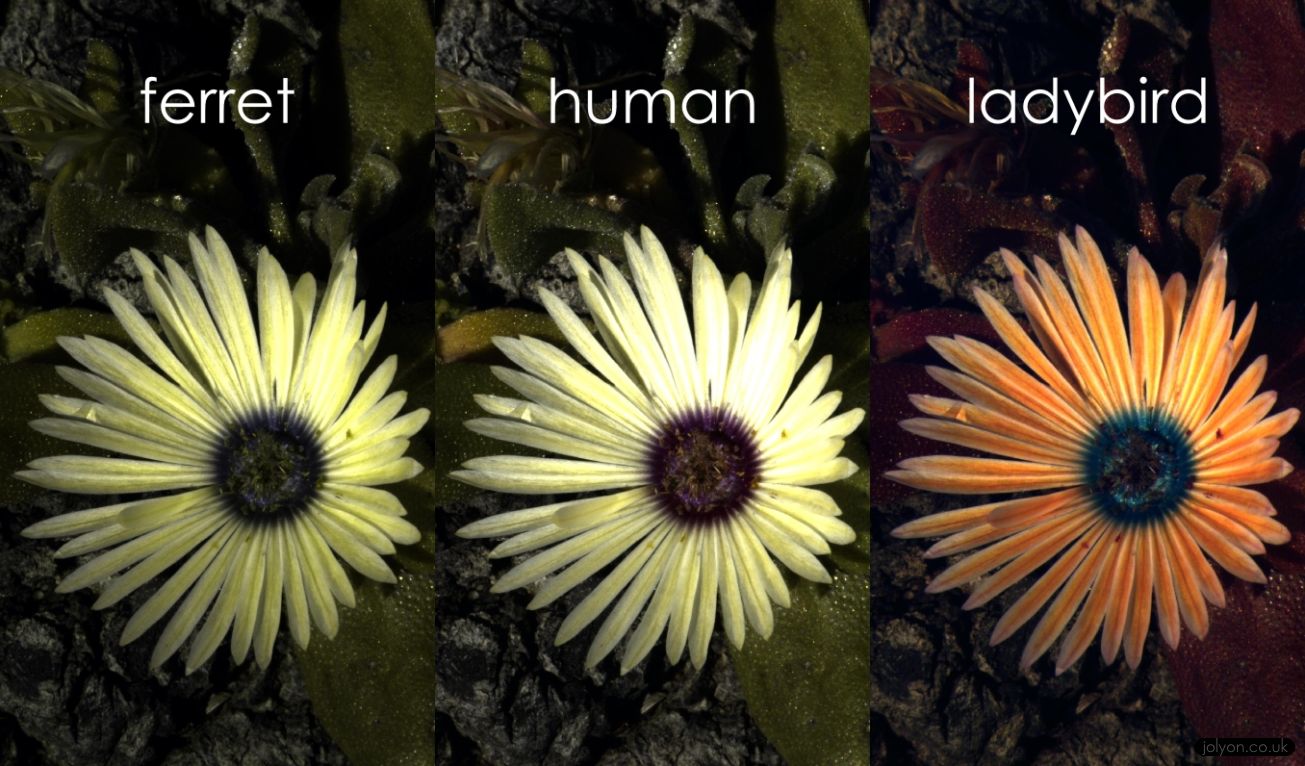After lunch today I pointed my UV camera at some flowers instead of plover eggs. Look how interesting the colours are to insect vision. Ferrets can see a little more into the UV than us, but only see in two colours. They really don’t miss much compared to us humans with three colours. But the ladybird vision shows how this flower is trying to signal to insects with deeper UV vision, hoping to spread it’s pollen.


I know nothing about South African flowering plants, so if you know what species this is do let me know.





Butterflies Have The Broadest Visual Spectrum Of Any Known Animals
As one who is interested in how Monarch Butterflies select flowers and plants on which to feed and lay eggs, I’m interested in what visual cues {possibly outside of the human visible spectrum) a butterfly may use for those selections. In particular, I’m interested to know if there is anything “invisible” about Asclepias plants/flowers, as very many have what appear to the human eye to be white or cream flowers. That fact seems to be contradictory to the information provided in the research article.
If you are able to shed any “light” on that issue, please e-mail me.
Butterflies Have The Broadest Visual Spectrum Of Any Known Animals (from
ultraviolet through red (300 to 700 nm) with orange being the most strongly
preferred and purple the least preferred color.
Research Papaer: